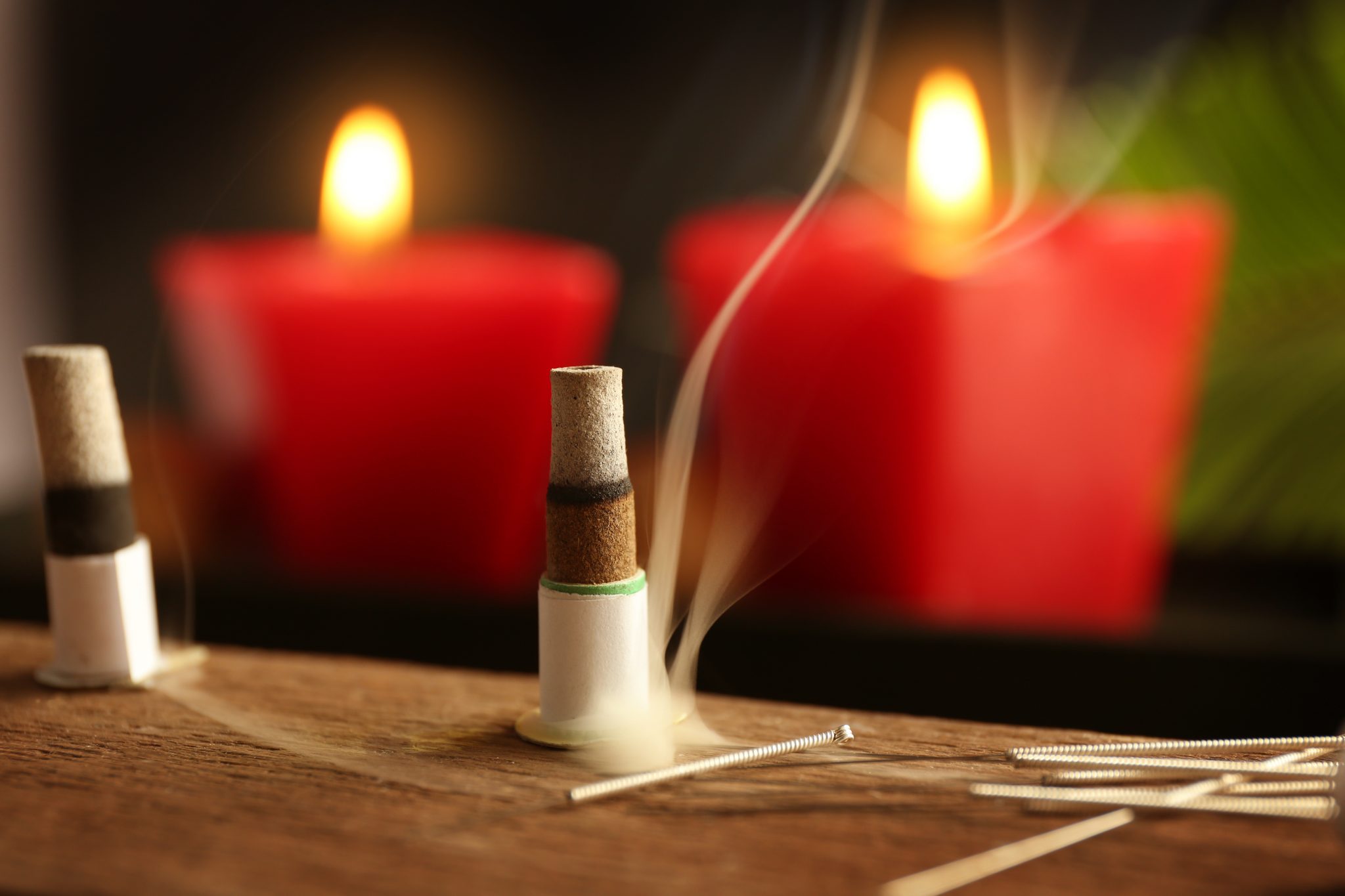
Moxibustion for Menstrual Pain
It is estimated that about 45% to 72% of women suffer from primary dysmenorrhea (Yang et al., 2017). The term primary dysmenorrhea refers to menstrual pain that typically begins before and is relieved soon after the onset of menstruation, and is thought not to be caused by any underlying diseases. Secondary dysmenorrhea, on the other hand, is caused by pathologies in the pelvic structure such as endometriosis, pelvic inflammation, or myomas of the uterus.
Of the women who have primary dysmenorrhea, a subset experience severe and debilitating pain that requires bed rest, missing work, or limiting daily activity. For these women, conventional treatment calls for non-steroidal anti-inflammatory drugs (NSAIDs) and oral contraceptives. However, for women who are interested in a non-pharmaceutical approach, studies show that a natural modality called moxibustion is as effective and in some cases even more effective than drugs.
So what is moxibustion? It is a treatment strategy under the umbrella of traditional Chinese medicine, which also includes interventions such as acupuncture, Tuina/massage, auricular acupuncture, and acupressure. Moxibustion, often referred to as moxa, involves the use of an herb called artemisia (or mugwort). This herb is burnt and then placed near the skin at specific acupuncture points to elicit a therapeutic effect. It is a simple technique that involves no pain. The effectiveness of moxibustion is two-fold: the body responds physiologically to heat stimulation generated by burning moxa, and also responds to the chemical components in mugwort leaves.
Moxa is used extensively in China and a bit in the United States, but it receives far less attention than acupuncture. According to scholar Subhuti Dharmananda, Ph.D., “the original Chinese term for what we call acupuncture is zhenjiu, which refers to both needling (zhen) and moxibustion (jiu), two techniques understood to be essential parts of one fundamental approach to treating disease and maintaining health. Nonetheless, compared to acupuncture, moxibustion is usually deemed a secondary practice” (2004).
The benefits of moxibustion for menstrual pain are clear. A 2017 clinical trial concluded that moxibustion therapy can be as effective as conventional drugs for menstrual pain relief. The study showed that serum levels of pain mediators, such as prostaglandins, were significantly improved after both types of treatment. What’s interesting to note is that the effectiveness of moxibustion (specifically on pain intensity and duration of pain) lasted for three months after treatment, and was superior to the drug’s effect (Yang et al., 2017).
There are so many other benefits to moxibustion—such as turning a breech baby and treating inflammatory bowel conditions—that we can’t possibly go into all the details today. Needless to say, moxibustion is a simple, non-invasive, and gentle modality that often facilitates calm and relaxation. At Naturna, moxibustion is included in each acupuncture treatment and provided as needed. Come and give it a try! Contact us today to set up your initial consultation.
References
Dharmananda, S. (2004). Moxibustion: Practical considerations for modern use of an ancient technique. ITM.
Yang, M., Chen, X., Bo, L., Lao, L., Chen, J., Yu, S., … & Yang, J. (2017). Moxibustion for pain relief in patients with primary dysmenorrhea: A randomized controlled trial. PloS one, 12(2), e0170952.


